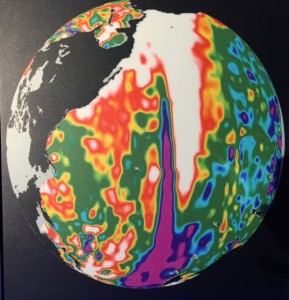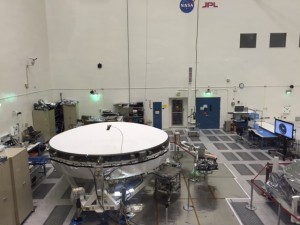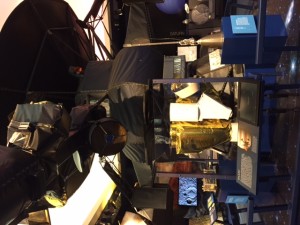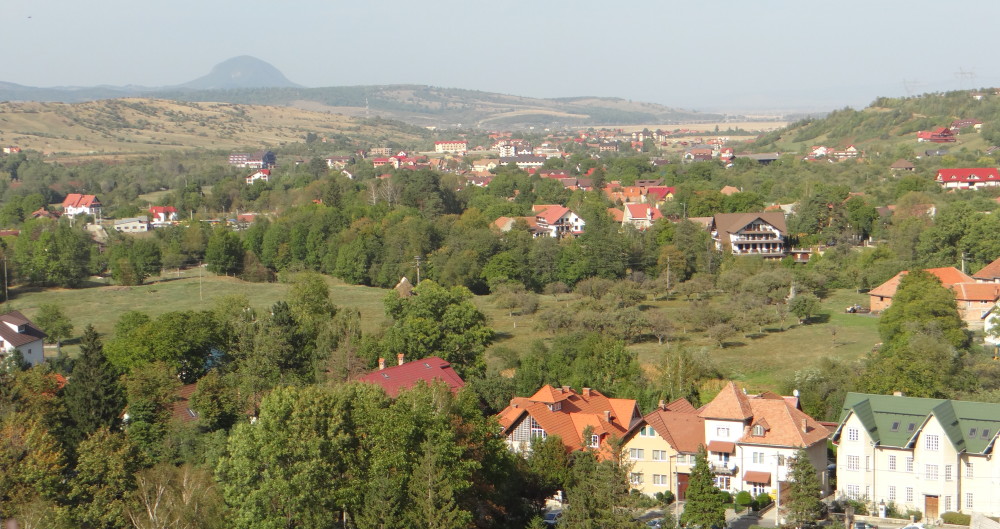 Photo: Ileana Johnson 2015
Photo: Ileana Johnson 2015
On a recent trip to California, I was constantly reminded of what is wrong with California, a state whose economy was so booming decades ago that, had it been a stand-alone state, it would have been the world’s sixth largest economy. Looking at this state now, ravaged by years and years of Marxist policies, open borders, unchecked illegal immigration, anchor babies, multiculturalism, insane diversity rules, sanctuary cities, multi-lingual school system, illegal voting, tax everything and tax again, and environmentalist-driven water use plans including but not limited to dumping billions of fresh water into the ocean in order to save the Delta smelt while orchards and fields are starved for water and trees and crops have long dried out.
California is more concerned with smoking habits if you take into account expensive signs posted everywhere announcing in big, bold letters to those who can read English, “Warning: Birth Defects – Tobacco smoke is known to the state of California to cause cancer and birth defects or other reproductive harm.”
California is so protective of animals and planets, even wolves and planet Earth need lawyers. Earthjustice was offering their services through a beautiful ad at the airport for the traveling endangered wolves culled by indiscriminate killing.
California was the golden state, the sunshine state, but the gold has long run out, the luster is now tarnished, perhaps golden brown on account of all the dead grasses from the three-year drought.
California still does something right, NASA’s Jet Propulsion Laboratory in Pasadena. For over fifty years, JPL‘s robotic missions have explored every planet in our solar system. Today, in addition to monitoring Earth and exploring the solar system, JPL “probes deep space in our galaxy and outward to the greater universe.” Managed by the California Institute of Technology for NASA, the Jet Propulsion Laboratory is a federally funded research and development center for domestic as well as international entities.
JPL built many firsts:
– Mariner 2 in 1962, the first successful interplanetary spacecraft
– Mariner 9 in 1971, the first spacecraft to orbit another planet (Mars)
– Voyager 2 in 1979-1989, the first tour of the outer planets
– Galileo in 1997, the first orbit of Jupiter
– Cassini in 2004, the first orbit of Saturn
– Deep Impact in 2005, the first comet impact
– Voyager 1 in 2013, the first spacecraft to reach interstellar space
 The new Cassini Photo: Ileana 2015
The new Cassini Photo: Ileana 2015
Cassini is a cooperative mission of NASA, the European Space Agency and the Italian Space Agency, with other hundreds of scientists and engineers from Europe and the U.S. The spacecraft’s final orbits have been named the Grand Finale.
The orbiter Cassini, the largest interplanetary spacecraft built by NASA was launched on October 15, 1997, from Cape Canaveral in Florida, with a Huygens probe aboard owned by the European Space Agency. In 2017, when the Grand Finale spacecraft falls into Saturn’s atmosphere, it will end twenty years of extraordinary mission of exploring Saturn, its rings, Titan, icy satellites, and the magnetosphere. During the first decade of orbiting, 500 gigabytes of scientific data were beamed to Earth through NASA’s Deep Space Network; Cassini made 200 orbits of Saturn, 132 close flybys of Saturn’s moons and discovered seven new moons.
Top discoveries of Cassini include:
– Huygens probe onboard Cassini parachuted to Titan, the first such landing on a moon in the outer solar system
– Icy plumes were found spraying from “tiger stripe” fissures on Enceladus, one of Saturn’s moons
– The moons on Saturn were active and dynamic – showing how planets and moons form
– Saturn’s largest moon, Titan, has rain, rivers, lakes, and seas and is surrounded by thick, nitrogen-rich atmosphere, perhaps similar to what Earth’s was like long ago
– Images of the northern storm of 2010-2011 which covered Saturn for months
– Radio-wave patterns are not tied to Saturn’s interior rotation
– Images of vertical structures inside the rings piled more than 2 miles high
– Titan’s prebiotic chemistry
– Giant hurricanes at both Saturn’s poles
– North polar hexagon of Saturn
By the end of its 20-year mission, the new Cassini probe assembled with a much larger antenna will make “detailed maps of Saturn’s gravity and magnetic fields, revealing how the planet is composed on the inside,” how much material is in the rings, and perhaps elucidate the mystery of how fast the interior of the planet is rotating. It will take pictures of rings and clouds and “sample icy ring particles being funneled into the atmosphere by Saturn’s magnetic field.”
JPL also monitors the Earth’s climate through its GRACE-FO (Follow On in 2017) by tracking Earth’s water in motion with more precise measuring instruments than its predecessor GRACE. Tracking variations in gravity which was assumed to be caused by the movement of water, JPL monitors changes in underground water storage, water stored in lakes and rivers, soil moisture, ice sheets and glaciers, and sea levels caused by adding water to oceans.
 NASA’s Aquarius Photo: Ileana 2015
NASA’s Aquarius Photo: Ileana 2015
As a man-made global warming skeptic, I was interested in the mission of Aquarius. According to JPL’s museum, Aquarius provides data to “improve computer models” to help “researchers better understand our climate.” NASA’s Aquarius takes 300,000 measurements per month “to advance our understanding of ocean salinity’s role in Earth’s water cycle, ocean circulation, and climate.”
The spacecraft assembly area for the new Cassini was exhibiting a huge meringue pie-like spacecraft. The huge room was at the time deserted.
The Science Division of JPL included four areas of research:
– Understanding our Universe (from the Earth to the Planets and Beyond)
This included theoretical studies, observations, laboratory experiments, data analysis, advanced instrument development focused on current or future NASA missions.
JPL states, “Research areas include studying the causes and effects of climate change on Earth, the origin and nature of planetary bodies, the search for life beyond Earth, and the nature and evolution of the universe – all vital scientific issues being addressed by NASA.”
– Earth Science
“JPL Earth scientists conduct research to characterize and understand the atmosphere, land, and oceans on our home planet in order to make better predictions of future changes through the use of observations to improve models. Our wide-ranging research topics include studies of the composition of the atmosphere with a focus on greenhouse gases, air quality and ozone; the global water, carbon and energy cycles, including clouds, snow, ice and vegetation; ocean circulation and interactions between oceans, atmosphere and sea ice; and earthquake fault systems, volcanic eruptions, and the composition of Earth’s surface.”
– Planetary Science
Understanding origins, evolution, structure of planets, satellites, and smaller bodies in the solar system; geology and geophysics of terrestrial planets, particularly Mars, satellites, planetary atmospheres, comets, asteroids, properties of planetary ices, chemistry, astrobiology, search for water beyond Earth; and instrument development for future missions.
– Astrophysics and Space Sciences
Studying the Sun and its heliosphere, solar wind, formation of stars, formation of planetary systems, exoplanets, formation, structure, and evolution of our own galaxy, distant galaxies, the Universe; development of instruments to “characterize astrophysical objects including exoplanets, proto-planetary disks, interstellar molecular clouds, distant galaxies, black holes, and the Cosmic Microwave Background, the relic radiation from the Big Bang.”
Mars was explored by twin rovers Spirit and Opportunity which found evidence of long-term water near their landing site in 2004. Sojourner studied rocks, dust, and weather on Mars during its 1997 mission. Opportunity’s mission found that a meteorite had crashed into a 65-foot basin (Eagle Crater) previously covered by a “body of salty water deep enough to splash in.” These Mars rovers ranged in size from a footstool (Sojourner), golf cart (Opportunity and Spirit), and an SUV (Curiosity).
Mariner 10 (1973-1975 missions) visited the scorched Mercury, the closest planet to the sun. The rover found that “some deep craters may contain deposits of water ice hidden from the heat of the Sun.”
According to JPL, “Venus shows what happens when a heavy carbon dioxide atmosphere and thick clouds smother the surface of a volcanic world. The clouds absorb heat from the Sun and from the surface and prevent it from escaping. As a result, a runaway greenhouse suffocates the planet. Volcanic eruptions have built low-level mountains, pancake-shaped domes and ancient rivers of lava.” The Magellan mission and Earth-based radars help draw the map of Venus.
JPL’s satellite Explorer 1 began its survey of Earth in 1958. The only planet that is largely covered by salt water, Earth has only 2.5% fresh water. According to JPL, over two-thirds of this fresh water is frozen in the icecaps of Antarctica and Greenland. “Less than 1% of Earth’s fresh water is accessible for direct human use.”
Earth’s crust, divided into tectonic plates, carries the ocean and land on “their backs” so to speak. Earth is wrapped in an atmosphere made up “almost entirely of nitrogen, a smaller amount of oxygen, and other gases.” It is this combination that supports life on earth.
When reading this quote from JPL, Dr. Klaus Kaiser added, “One of these ‘other gases’ is carbon dioxide (CO2) on which all life on earth depends!”
JPL tracks through its Jason 1 and Jason 2 the movement of warm waves of water east across the Pacific every few years called El Nino, measuring “the changes in sea surface height to an accuracy of 3.3 centimeters (about 1.3 inches).”
Earth-observation satellites monitor the land, ocean, ice, and atmosphere. It can see, for examples, how the Mississippi River Delta water carries soil to the sea, creating mudflats and marshlands. Same satellites can monitor hurricanes, their size, intensity, wind speeds, and motions. JPL’s orbiting ASTER instrument can show soil erosion to shorelines.
Apollo 17 (1972) took the first ever full view picture of Earth and the first-ever photograph of Earth’s south polar regions taken from space. In 1978 SEASAT “set the stage for today’s ocean-observing satellites.”
A U.S.-French oceanography mission called TOPEX/Poseidon measured “global sea surface height from 1992-2005. It provided data about the heat stored in the ocean, and the speed and direction of the currents.” This information provided short-term weather and global climate variations. Could this be considered a base-line measurement?
To continue the work of TOPEX/Poseidon, Jason 1 was launched in 2001. This satellite monitors “global ocean circulation, studies interactions between the ocean and atmosphere, improves global climate predictions, and monitors events such as El Nino.”
Launched in 1999, SEAWINDS “senses ripples caused by winds near the ocean’s surface. Knowledge of wind speed and direction helps scientists understand climate and weather patterns, changes in Arctic sea ice and icebergs, and variations in snow and soil moisture levels on land.” (Museum archives)
The most complete high resolution digital topographic database of Earth was mapped by the Shuttle Radar Topography Mission (SRTM) on the 11-day flight aboard the space shuttle Endeavour, the manned-space program that was scrapped by the Obama Administration.
And there is our closest celestial neighbor, the Moon, magnificently desolate and covered in millions of craters created by the impact of asteroids and comets. JPL discovered in recent times that the Moon “holds at least small amounts of water.” Galileo surveyed the moon during its 1992 passing to Jupiter.
 Galileo spacecraft Photo: Ileana 2015
Galileo spacecraft Photo: Ileana 2015
Galileo used a 400-Newton retrorocket to slow it down enough to be captured into orbit. The propulsion system was provided by Germany and built by Messerschmitt-Boelkow-Blohm (MBB).
JPL crashed three Ranger spacecraft into the moon’s surface. Surveyor missions were able to soft-land on the Moon and Surveyor 7 photographed the rim of Tycho Crater. This landing paved the way for humans to land on the Moon, proving that a spacecraft “would not sink into the lunar surface.”
According to JPL archives, the 1969 Apollo 12 lunar landing was made by astronauts within 200 meters (656 feet) of Surveyor 3.
Venus was explored by Magellan from 1989-1994 and was able to map its surface from orbit even though its atmosphere was very thick. Flight controllers tested a maneuver called “aero-braking.”
Our solar system, moving through space at 250 kilometers (155 miles) per second, is part of the Milky Way Galaxy, and was born about 4.6 billion years ago. The Sun, one of more than 100 billion stars in the Milky Way Galaxy, is orbited by eight major planets, their moons and rings, asteroids, comets, and dwarf planets.
“The Sun gives off energy created by reactions in a nuclear furnace at its core. That power plant supplies virtually all the energy for our solar system. Our star sustains life and affects climate processes on Earth. Violent transfers of matter and energy from the Sun to the Earth, such as solar flares, can disrupt our communications systems and endanger astronauts.” (JPL Museum Archives)
Genesis collected between 2001-2004 samples of the solar wind – a stream of charged particles flowing out from the Sun. It returned them to Earth for analysis in laboratories.”
Comets contain in their nucleus “the oldest material in the solar system.” JPL’s Deep Space 1 spacecraft passed by Comet Borrelly in2001 and sent back interesting photographs of jets forming a coma of dust and gases. “A comet is a time capsule from the formation of the solar system.” Comet Hale-Bopp wowed millions in 1996-1997 with its “tails of dust and blue plasma stretching across the sky for weeks.” In the year 4385, this comet will come close to the Sun again.
Meteorites collected from Antarctica and around the globe are metal or stone fragments that fall to Earth from asteroids, Earth’s Moon, Mars, or comets.
JPL tracks asteroids, pieces of smaller planetary bodies made of rock. Most are found in the Asteroid Belt and some have orbits that bring them in close proximity to Earth. They can be a few meters to over 900 kilometers across. The second most massive asteroid is Vesta (530 km across). Most asteroid orbit the Sun in the Asteroid Belt located between the orbits of Mars and Jupiter.
Jupiter is the largest planet in the solar system and is made up of gas and clouds with ammonia crystals and other ices. Jupiter’s strong gravitational pull keeps her moons and rings in check. Voyager 1 discovered Jupiter’s ring and the volcanoes on it.
Galileo Galilei looked at Saturn through his telescope in early 17th century and declared that Saturn had “ears.” Voyager 1 spacecraft photographed with high resolution this giant planet made of gas. The Hubble Space Telescope took clear photographs that elucidated the mystery of its atmospheric composition. Using data from Cassini’s ultraviolet-sensitive instrument, a colorized version of Saturn’s rings was drawn. Among the many moons embedded in Saturn’s rings, scientists at JPL have studied Enceladus and Titan. Apparently Enceladus’ ice volcanoes spray frozen particles into space through geyser-like vents. Titan has a smog-like atmosphere which it is believed to resemble the “primordial Earth.”
The “ice giant” Uranus shrouded by methane was visited by Voyager 2. Uranus has the coldest atmosphere of all the planets hence his moniker of a frigid world. “Uranus orbits the Sun on its side.”
Voyager 2 visited Neptune in 1989 and its moon Triton, with its “coldest surface in the solar system.” A “cantaloupe terrain” and “geysers that spout dark material from beneath its surface of nitrogen ice” were also discovered. A “near twin to Uranus,” Neptune has an atmosphere composed of hydrogen and helium with traces of methane.
Pluto, a dwarf planet and member of the Kuiper Belt, is a frigid world two-thirds the diameter of Earth’s Moon, with a methane ice surface and a very thin atmosphere. Pluto makes one trip around the Sun in 248 years.
The Space Flight Operations Facility, a National Historic Landmark since 1985, controls dozens of missions. Each team of controllers is responsible for communications to and from their assigned spacecraft via the sensitive antennas of the Deep Space Network. These antennas swivel on their bases and track spacecraft from horizon to horizon, dividing the earth into three sections, both listening and talking to their targets. The largest antennas are 10 stories tall with dishes 230 feet across.
The Space Flight controllers coined a phrase that allows one to say, once I visited the Space Flight Operations Facility, “I’ve been to the center of the Universe.”
ILEANA JOHNSON
American By Choice
